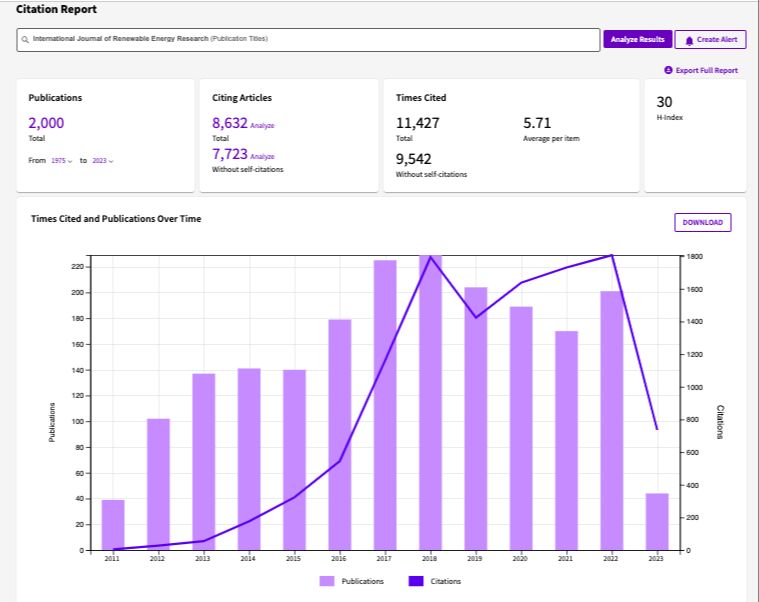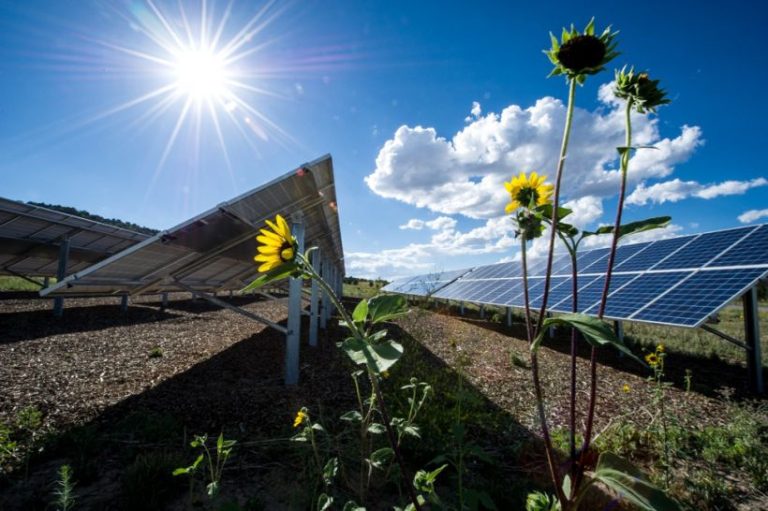What Is The Acceptance Rate For Renewable Energy Journal?

Renewable energy journals publish research on various renewable energy technologies and sustainability topics. According to the journal’s website, Renewable Energy was established in 1991 and publishes original research, review articles, and short communications on a wide range of renewable energy technologies (https://www.journals.elsevier.com/renewable-energy). Some key focus areas include bioenergy, solar energy, wind energy, hydropower, geothermal energy, and energy transition studies. Renewable Energy has an impact factor of 5.439 as of 2020, making it one of the top journals in its field (Scimago Journal Rankings, n.d.). Other notable renewable energy journals include Applied Energy, Energy Policy, and Journal of Cleaner Production. These academic journals provide an important platform for disseminating research and influencing renewable energy policy and deployment.
Scope of Renewable Energy Journals
There are a wide variety of academic journals focused on renewable energy research including solar, wind, biofuels, geothermal, hydroelectric, and other sustainable sources. Some of the top journals cover the full spectrum of renewable energy while others specialize in a particular field.
Leading multidisciplinary renewable energy journals include Renewable Energy, Renewable and Sustainable Energy Reviews, and Applied Energy. These journals publish on a wide range of renewable technologies and sustainability issues.
In the field of solar energy, top journals include Solar Energy, Progress in Photovoltaics, Solar Energy Materials and Solar Cells, and Journal of Photonics for Energy. These focus on photovoltaics, solar heating/cooling, solar materials, and other solar applications.
For wind energy, the main journals are Wind Energy, Wind Energy Science, Journal of Wind Engineering and Industrial Aerodynamics, and Wind Engineering. They cover turbine technology, wind farm development, wind resource assessment, and related topics.
In bioenergy, key journals are Bioresource Technology, Biomass and Bioenergy, Biofuels, Biotechnology for Biofuels, and GCB Bioenergy. These publish on biomass feedstocks, biofuel production, biogas, and sustainability issues.
There are also influential journals in other renewable energy fields like International Journal of Hydrogen Energy for fuel cells and hydrogen, Applied Thermal Engineering for geothermal, and Journal of Renewable and Sustainable Energy covering emerging technologies.
Submission and Review Process
The submission and peer review process for renewable energy journals generally follows standard academic publishing practices. According to the submission guidelines for Renewable Energy, authors should submit original research papers to the journal’s online submission system, Editorial Manager (https://www.sciencedirect.com/journal/renewable-energy/publish/guide-for-authors).
Submitted manuscripts go through an initial editorial screening and are then typically sent for peer review by two or more independent reviewers knowledgeable in the field. These external reviewers provide feedback on the quality, originality, and significance of the research. Based on the reviewers’ recommendations, the editor makes a final decision to accept, reject, or ask the authors to revise and resubmit the paper.
The peer review process aims to ensure high quality standards, scientific rigor and impact, and original contributions. It generally takes several weeks to complete the full peer review. According to Renewable Energy, the journal aims to provide the first decision within 6 weeks of submission (https://www.sciencedirect.com/journal/renewable-energy).
Impact Factors
Impact factor is a metric used to evaluate the importance and influence of academic journals. It represents the average number of citations received in a given year by articles published in the journal in the previous two years.
The impact factor provides an indication of the prestige and visibility of a journal within its field. Journals with higher impact factors are often considered more important and influential.
According to the SCImago Journal Rankings, some of the top renewable energy journals by impact factor include:
- Nature Energy – 14.100
- Energy and Environmental Science – 33.245
- Advanced Energy Materials – 25.045
- ACS Energy Letters – 16.182
The leading journal in the field, Renewable Energy, had an impact factor of 8.634 in 2022 according to Academic Accelerator. This places it among the top 5% of all academic journals.
Impact factor provides one metric of a journal’s reach and significance. However, it has limitations and should be considered alongside other factors like readership, relevance to a particular field, and subjective assessments of quality.
Acceptance Rates by Journal
According to the 2021 Journal Acceptance Rates in Science and Engineering report, top journals tend to have very low acceptance rates as they receive the most submissions. Source. For example, Nature has one of the lowest acceptance rates at only around 5% according to the editor-in-chief, while Science accepts around 6-7% of papers. Similarly, Cell accepts around 10% of submissions according to a publisher blog. On the other hand, more specialized or niche journals may have higher acceptance rates, such as IEEE Transactions on Communications which accepts around 40% of papers. Lower tier journals also tend to have higher acceptance rates, sometimes up to 70-80%. However, acceptance rates alone don’t indicate journal quality and impact factor should also be considered.
Factors Influencing Acceptance Rates
There are several factors that can influence the acceptance rate for a renewable energy journal submission:
Research Quality – Higher quality research that makes a significant and novel contribution is more likely to be accepted. Factors like sound methodology, large sample size, and robust statistical analysis improve research quality.
Fit for Journal – The scope and aims of the research must align with the renewable energy journal being submitted to. Research that matches the journal’s specific focus and readership is more likely to be accepted.
Quality of Writing – Well-written manuscripts with clear organization, good grammar, proper citation and formatting are more likely to make a positive impression on reviewers.
Novelty of Research – Reviewers favor research that breaks new ground and adds unique insights to the existing literature.
Relevance of Topic – Papers on cutting-edge topics of high interest and significance to the renewable energy field tend to fare better.
Author Reputation – Established authors with strong publication records may receive a form of preference during review.
Improving Your Chances
There are several steps authors can take to boost the odds of acceptance when submitting to a renewable energy journal:
Conduct high quality research that provides novel insights and significant contributions to the field. Studies should employ sound methodology and data analysis. Select an appropriate journal that aligns with the scope and impact of the research. Adhere closely to the journal’s formatting and submission guidelines.
Write the manuscript clearly, concisely, and coherently. Get feedback from colleagues prior to submission. Proofread extensively to eliminate errors. Use an informative title, structured abstract, and descriptive keywords. Follow reporting guidelines for the study design. Cite relevant prior literature and explain how the current study builds upon it.
Highlight the importance, implications, and practical applications of the research. Discuss limitations and future research directions. Submit a cover letter summarizing the key findings and contributions. Select recommended reviewers who are experts in the specific research area.
Revise the manuscript thoroughly in response to reviewer comments. Avoid resubmitting rejected manuscripts without addressing reviewer concerns. For additional tips, see guidance from Renewable Energy’s author guidelines.
Open Access vs Subscription Journals
There is some evidence that open access journals tend to have higher acceptance rates than subscription journals. A study by Björk and Solomon in 2012 analyzed acceptance rates for open access journals indexed in Scopus and found that the average acceptance rate was around 60% (1). This was higher than the average acceptance rate for subscription journals at the time.
One reason proposed for the difference is that open access journals may be newer publications trying to build up their reputation and readership. To attract more submissions, they may have a more inclusive editorial policy initially. However, this difference seems to have diminished over time as more established open access journals have emerged.
Overall, open access journals still tend to have acceptance rates about 10 percentage points higher on average compared to subscription journals. But there is a great deal of variation across individual journal titles regardless of the business model.
Trends Over Time
Acceptance rates for renewable energy journals have fluctuated over the past decade. According to the Journal Acceptance Rate Feedback System database, the acceptance rate for Renewable Energy was 71.4% in 2021, down from 79.6% in 2015. For Renewable and Sustainable Energy Reviews, the acceptance rate was 72.1% in 2021, a slight increase from 70.7% in 2015.
Some factors that may influence these small fluctuations in acceptance rates over time include the number of submissions, the quality of submissions, and shifts in editorial policies or focus areas. Overall, acceptance rates have remained moderately high for these top journals, indicating they are highly selective but continue to publish a substantial portion of submitted manuscripts after rigorous peer review.
Conclusion
In summary, acceptance rates for renewable energy journals can vary quite significantly depending on the impact factor and prestige of the journal. Top journals in the field like Renewable Energy and Renewable and Sustainable Energy Reviews have acceptance rates under 20%, while more specialty or regional journals may have acceptance rates of 30-50%. While acceptance is competitive across the board, there are several factors authors can optimize to improve their chances, such as carefully following the author guidelines, choosing the right journal, clearly communicating the novelty and significance of their work, having their manuscript reviewed by colleagues beforehand, and thoroughly responding to reviewer comments. Over time, acceptance rates appear to be decreasing slightly for some journals as more researchers enter the renewable energy field. By targeting an appropriate journal, developing high quality research, and effectively communicating findings, prospective authors can maximize their potential for publication.






